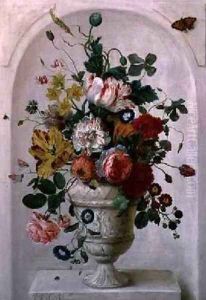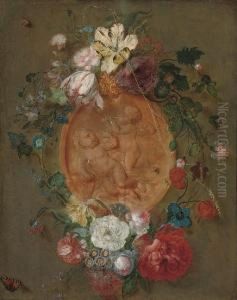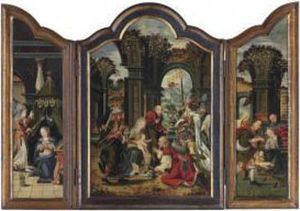Jan Frans Josephus Mertens Paintings
Jan Frans Josephus Mertens was a Belgian painter, born in 1865 in the city of Antwerp, which has a rich artistic heritage and is known for its significant contribution to the history of Flemish art. Mertens' artistic journey began in an environment deeply influenced by the Flemish tradition, yet he would eventually develop his unique style, characterized by his interest in landscapes, genre scenes, and still life compositions.
Mertens received his formal art education at the Royal Academy of Fine Arts in Antwerp, where many prominent Belgian artists have studied and taught. It was there that he honed his skills in drawing and painting, embracing the academic rigor of the time. His early work often reflected the academic style of painting prevalent during his formative years, which emphasized classical themes, meticulous technique, and a polished finish.
However, as the 19th century waned and Europe stepped into the 20th century, Mertens, like many of his contemporaries, was exposed to a variety of artistic movements that encouraged experimentation and personal expression. The influence of Impressionism, with its focus on light and color, as well as the later developments of Post-Impressionism and Symbolism, can be seen in the evolution of his painting style.
Throughout his career, Mertens exhibited his work at various venues, including the Salon in Antwerp and other important Belgian galleries, gaining recognition for his ability to capture the essence of his subjects with a blend of realism and a more loose, expressive brushwork. His landscapes often depicted the Belgian countryside, where he found inspiration in the simple beauty of nature and rural life. Additionally, his genre scenes and still lifes demonstrated a keen eye for detail and a fondness for the play of light and shadow.
Jan Frans Josephus Mertens continued to paint and contribute to the Belgian art scene until his death in 1947. His body of work remains a testament to the transitional period in Belgian art, bridging the gap between the academic traditions of the 19th century and the more modernist impulses that would define the 20th century. His paintings can be found in private collections and occasionally appear in art auctions, where they are appreciated by collectors for their charm and historical value.


